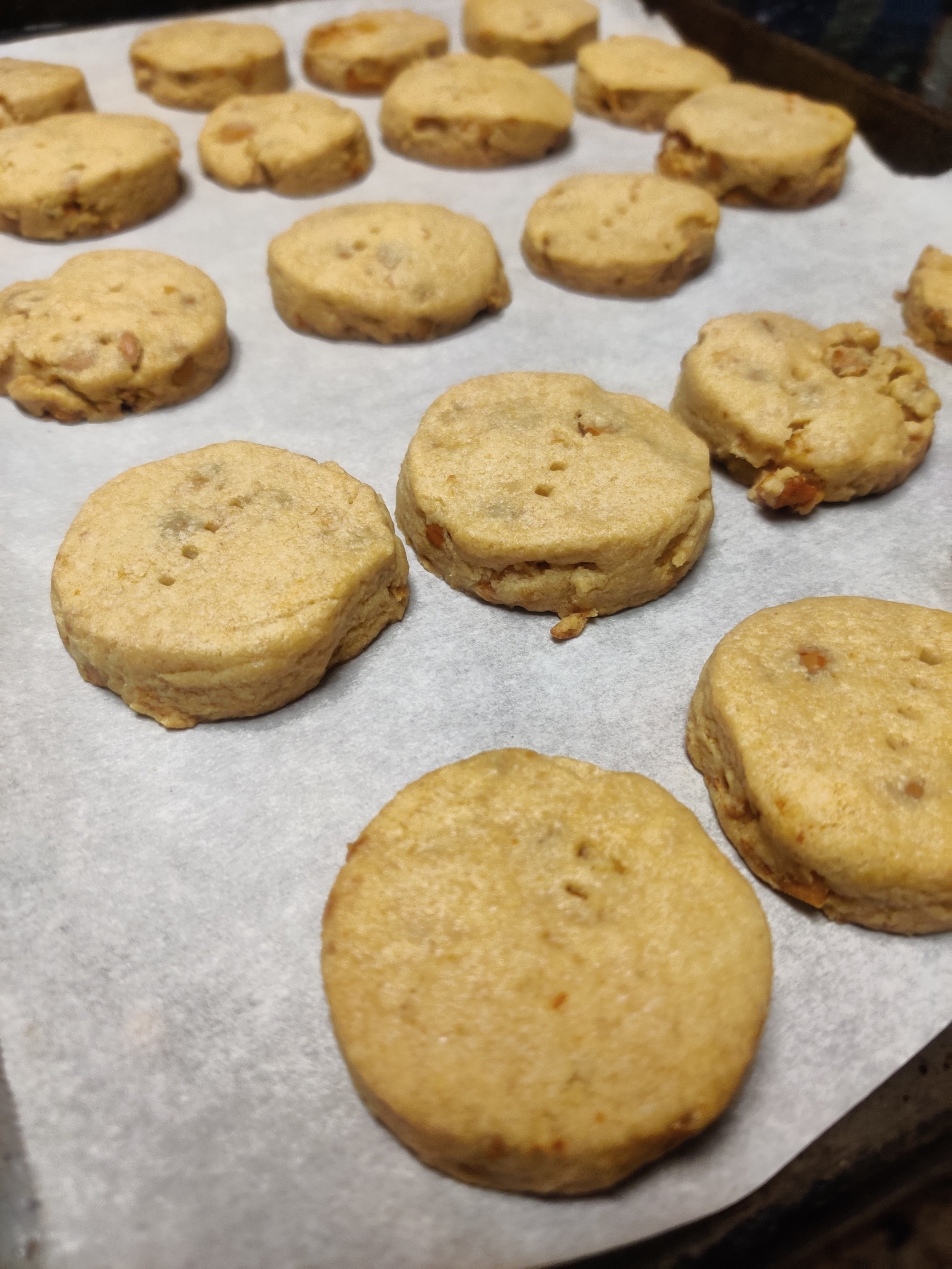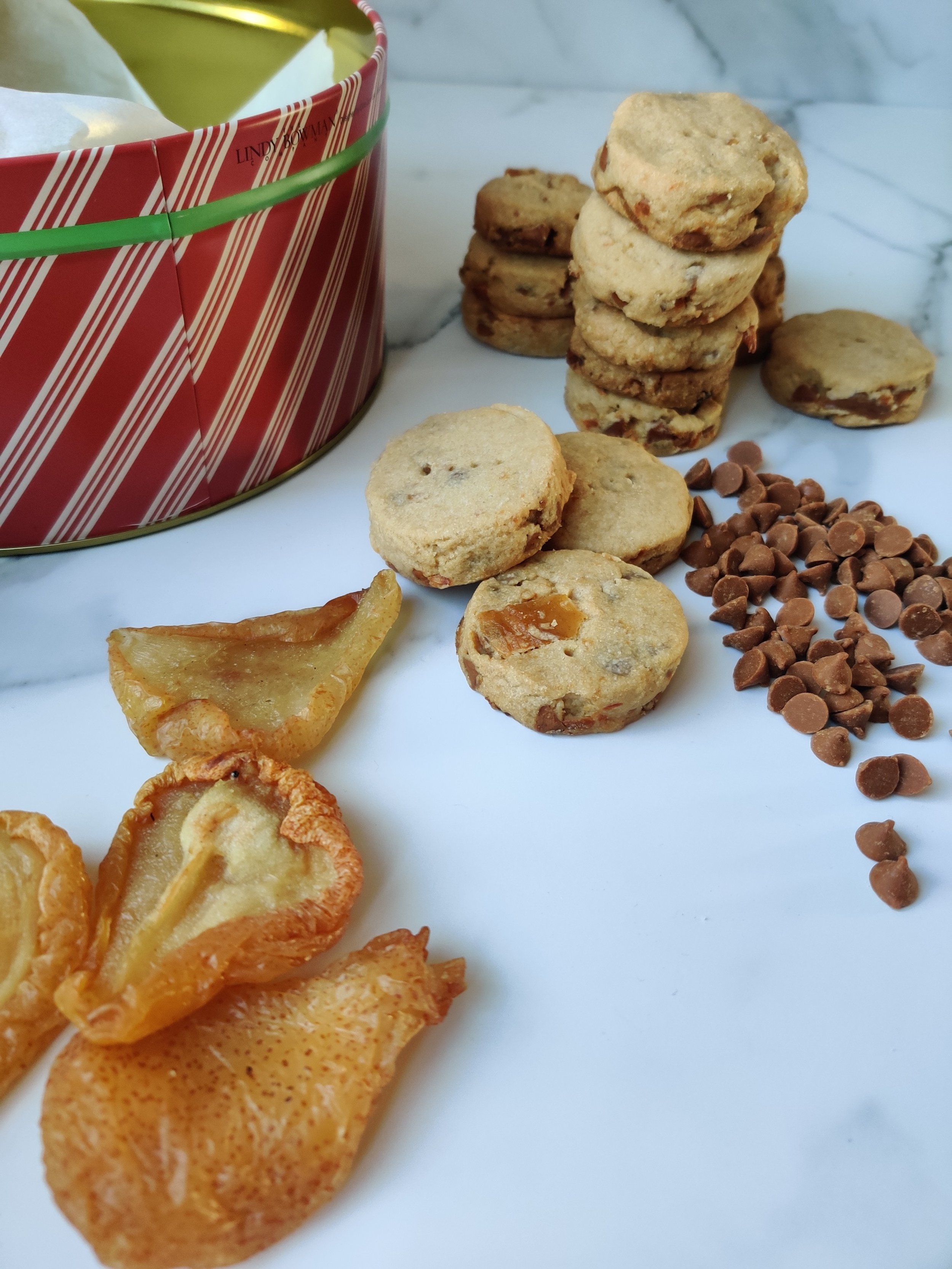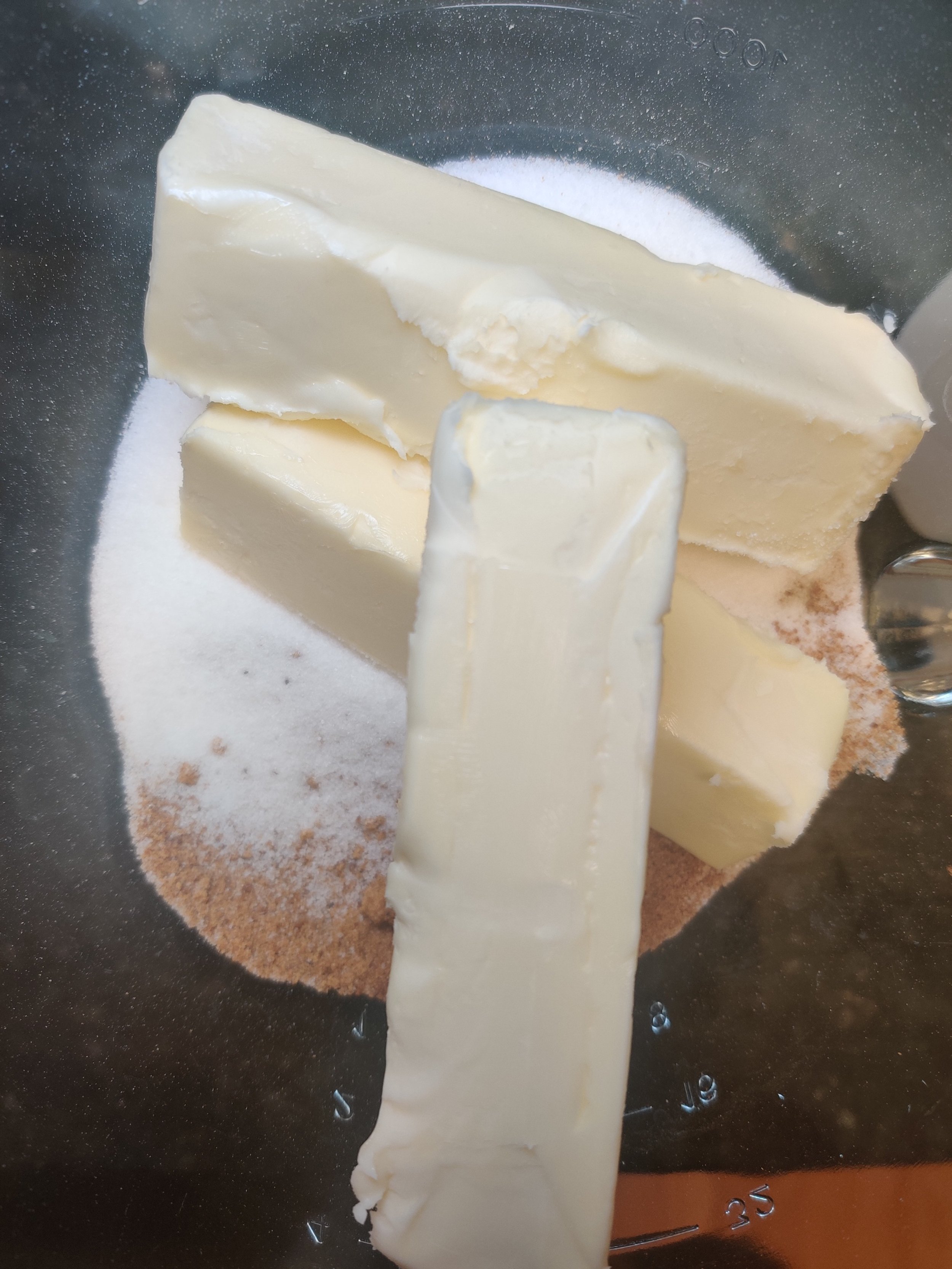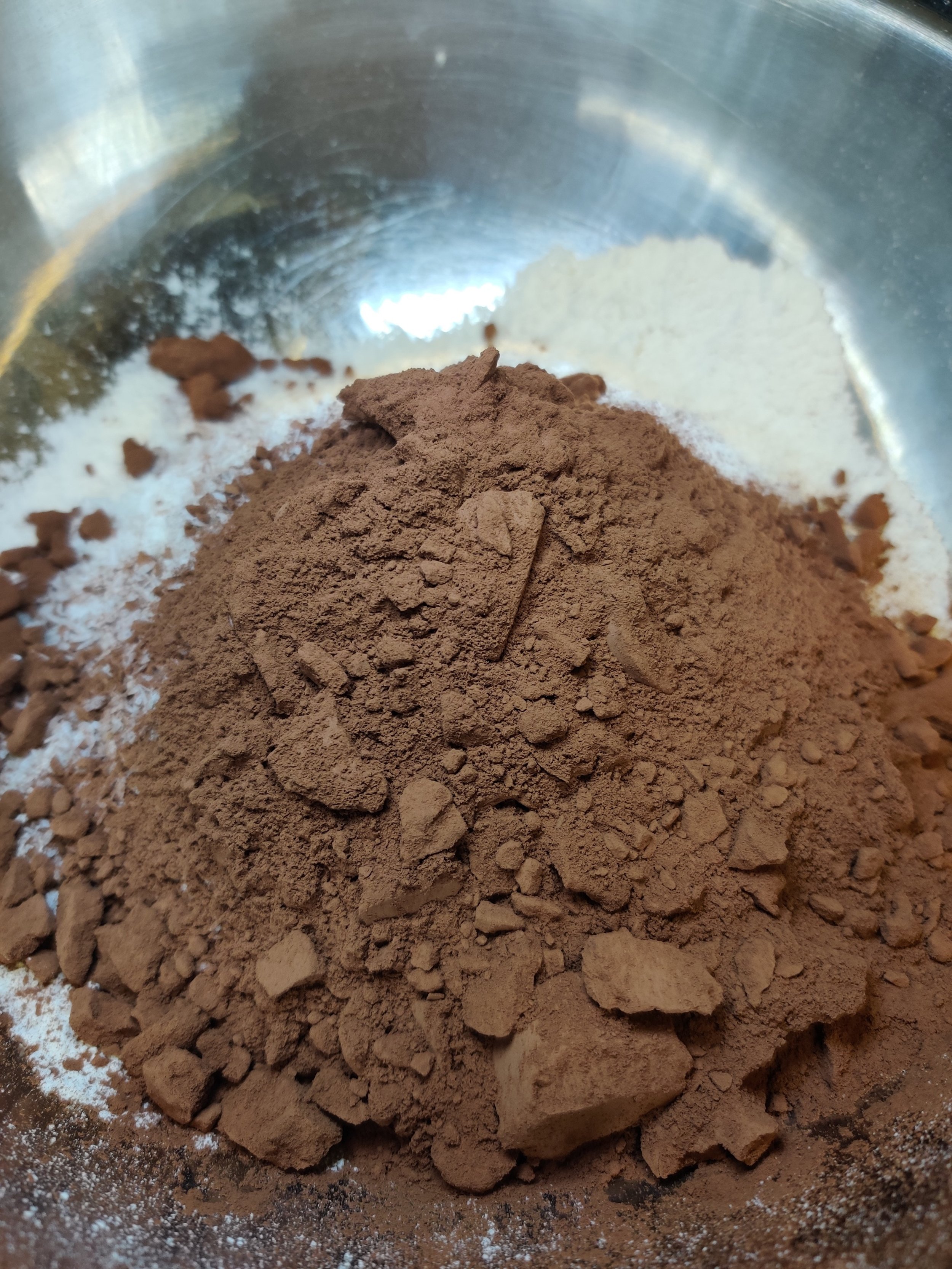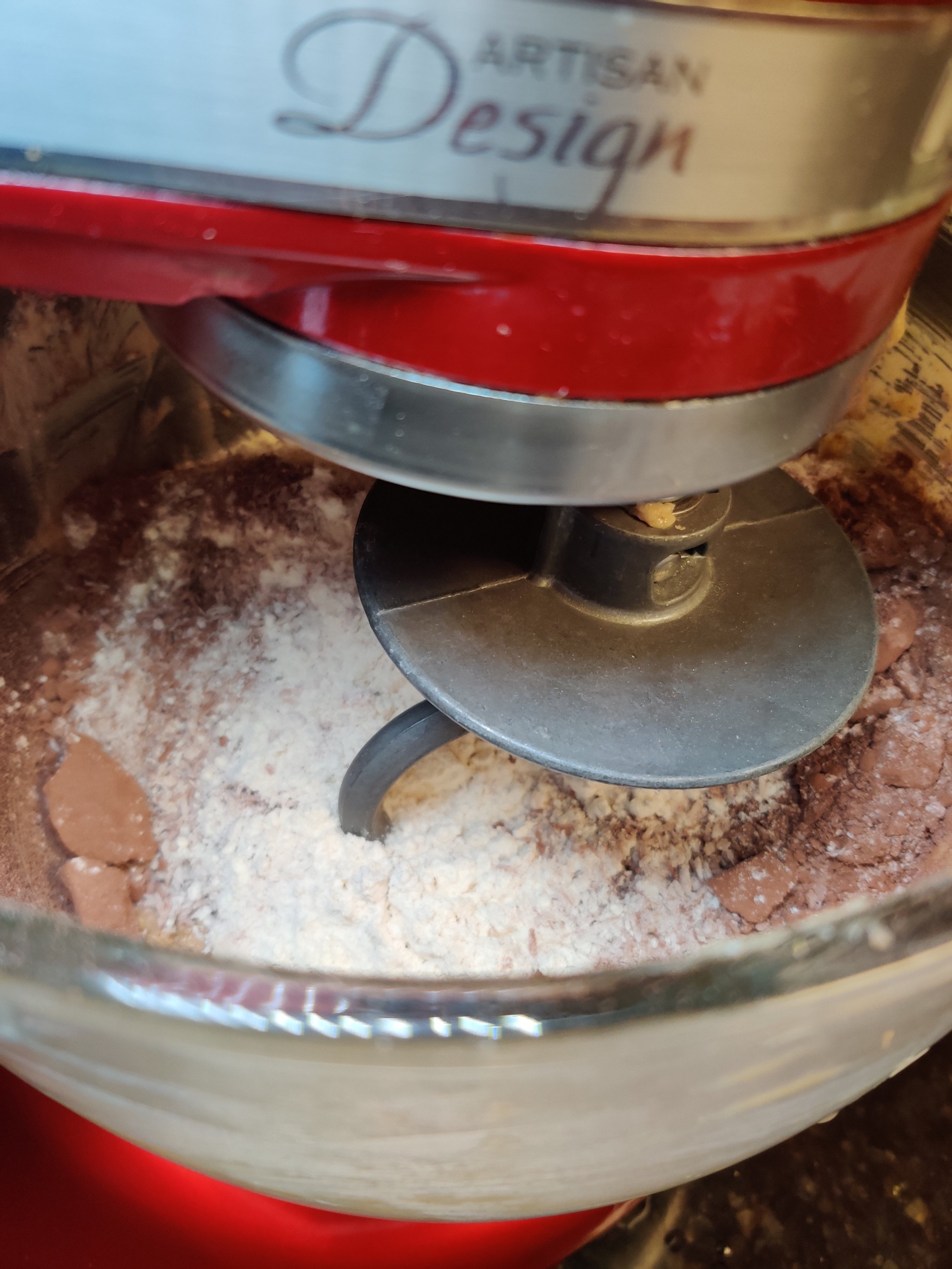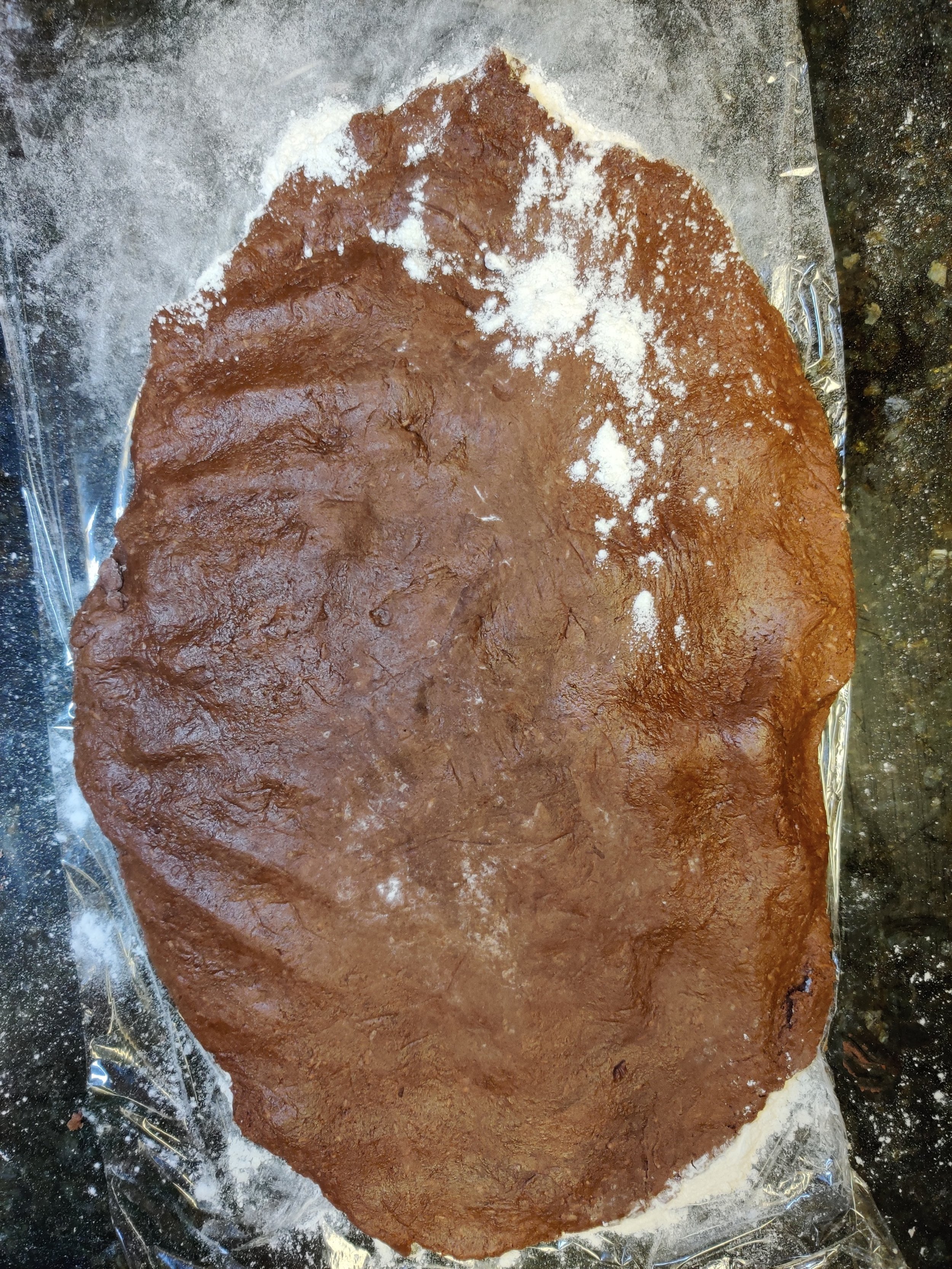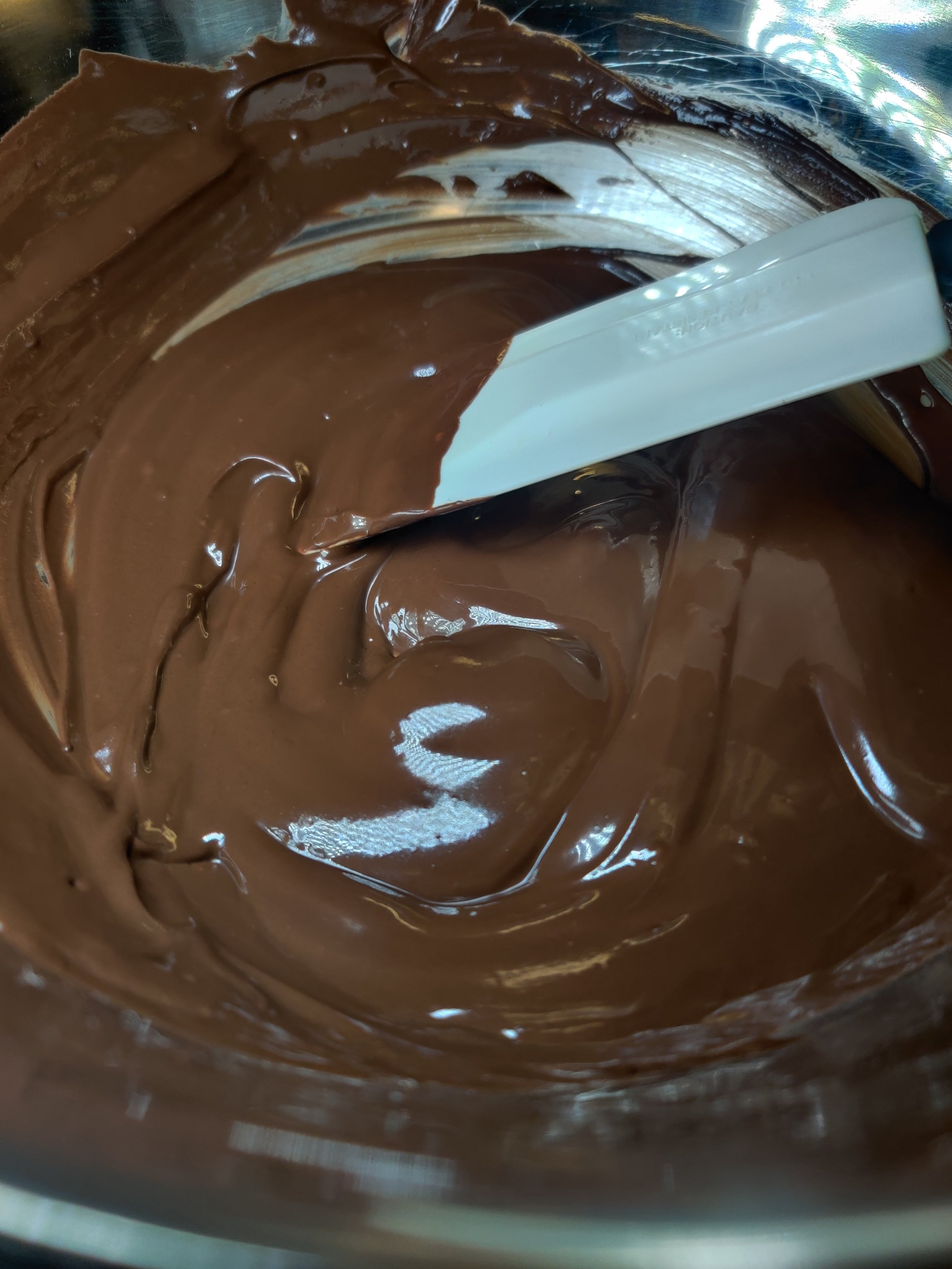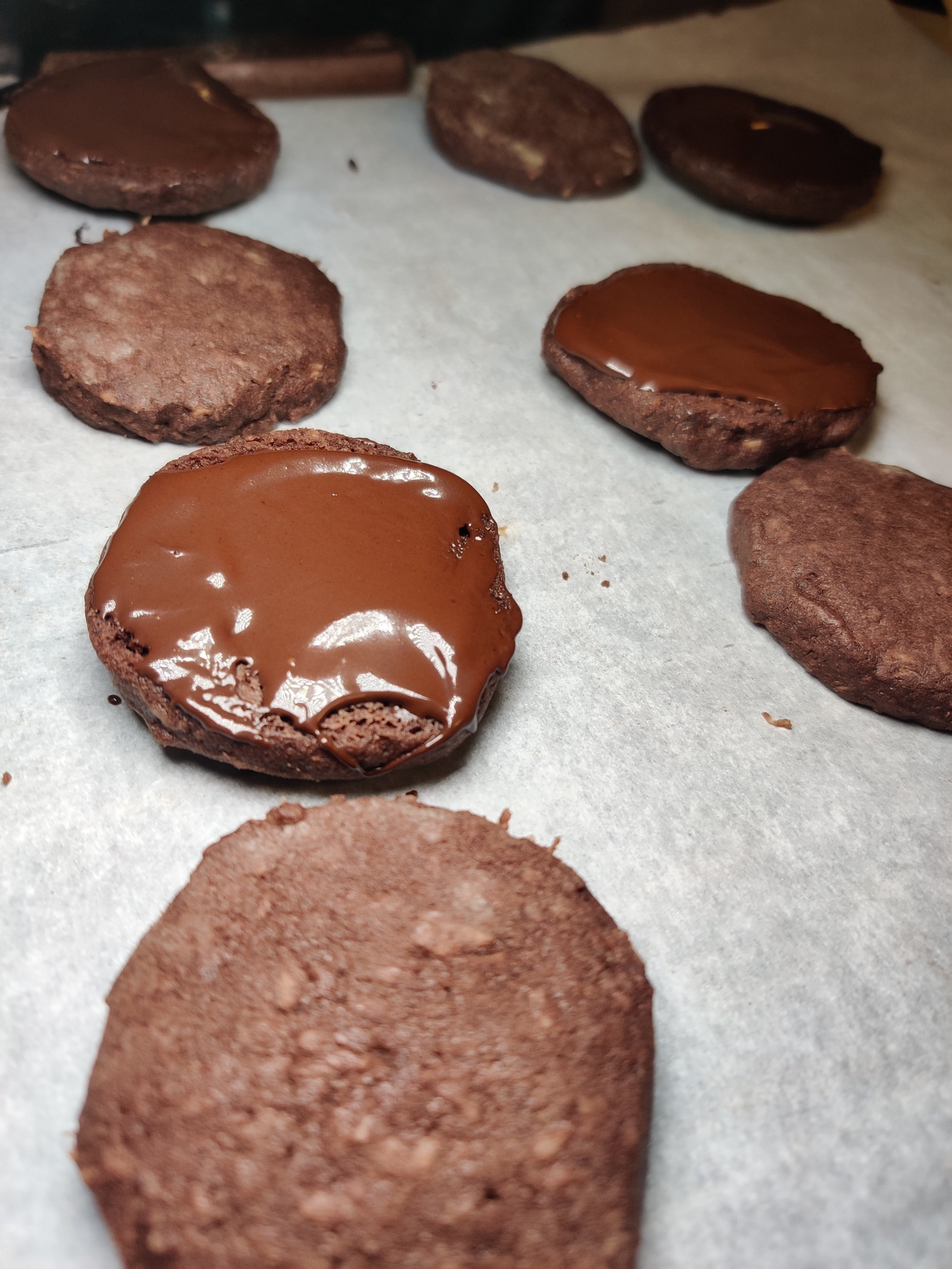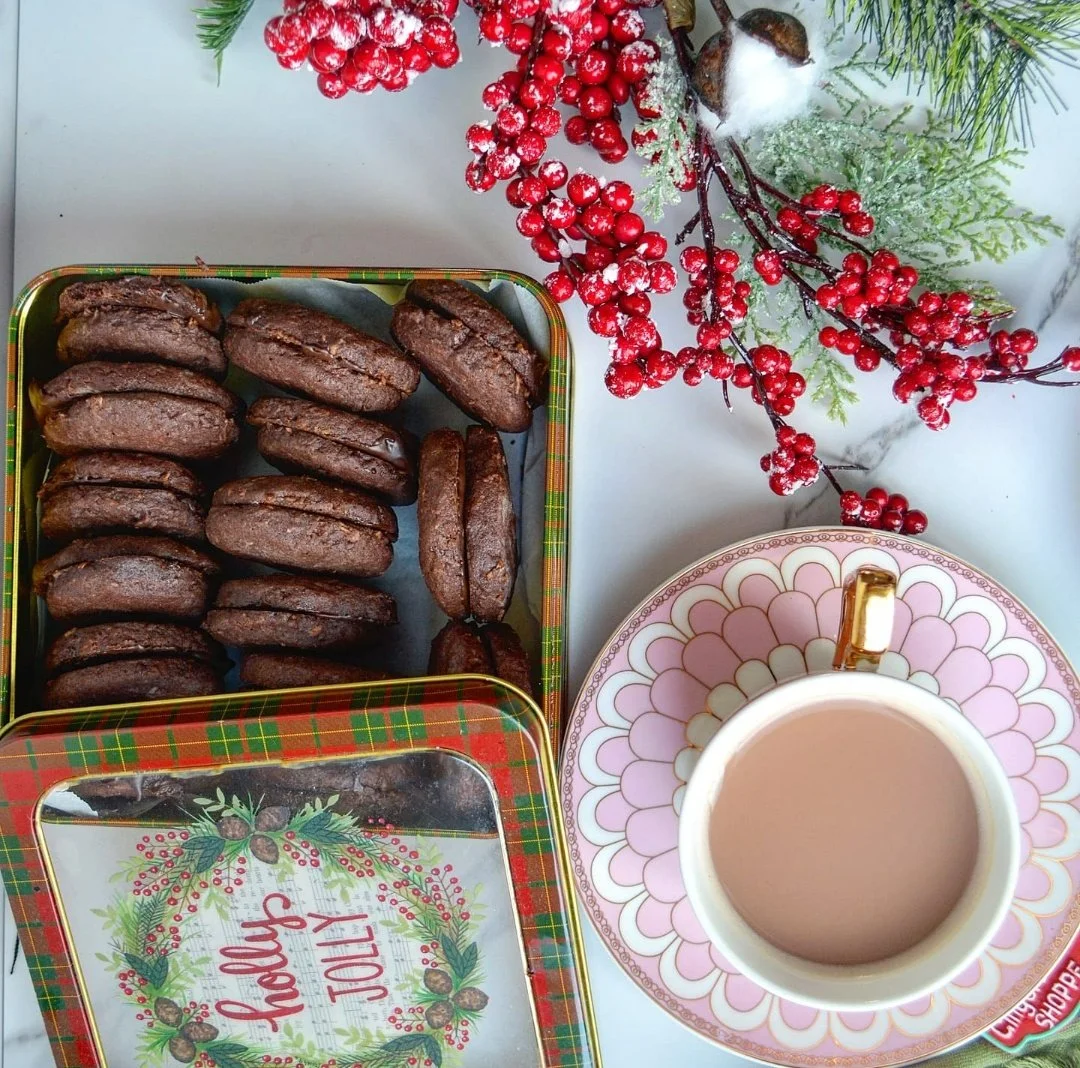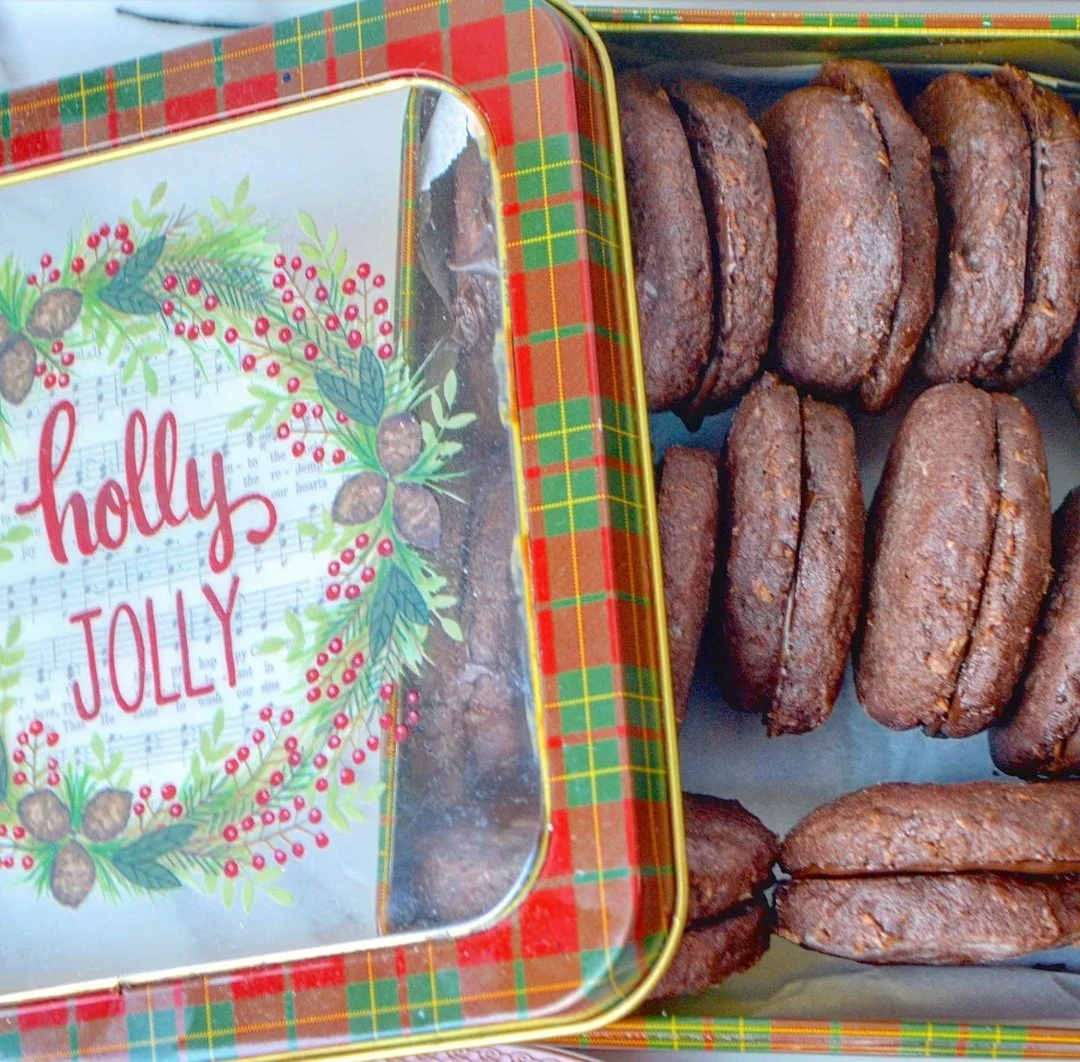Cinnamon and Pear Shortbread Biscuits
Introduction to Shortbread Cookies: Simple, Buttery Perfection
Few treats embody the beauty of simplicity quite like shortbread cookies. With just a handful of ingredients—butter, sugar, and flour—these classic cookies deliver a melt-in-your-mouth texture and rich, buttery flavor that's truly irresistible. Strictly by Scottish standards, "one part white sugar, two parts butter, and three to four parts plain wheat flour". The one thing that makes the small number of ingredients scrutinized is the quality, so find the best you can.
Honesty, I can eat these all day long, even though shortbread biscuits are associated with the holidays.
Shortbread cookies have a long history, originating in Scotland and cherished worldwide for their crumbly texture and delicate sweetness. As I noted, they are a staple during holidays, tea time, and special occasions, but their versatility makes them perfect for any time of year. Whether shaped into rounds, fingers, or festive designs, shortbread cookies are as beautiful as they are delicious.
I decided to spruce the cookies up with pear and cinnamon. Both are essential winter flavours, mainly in the dessert department. We tend to turn to dried cranberries, but dried pears offer the same texture and a great taste that pairs wonderfully with cinnamon. Who needs a poached pear with mulled wine spices when you have these crunchy treats that melt in your mouth?
As for the cinnamon chips, you can also turn them into toffee bits and omit the dried fruit altogether.
Here are some practical tips for making perfect shortbread:
1. Use High-Quality Butter
Butter is the star ingredient in shortbread, so choose a good-quality, unsalted butter for the best flavor. The better the butter, the better the cookie.
2. Keep Ingredients Simple
Stick to the traditional trio of butter, sugar, and flour. If you’re adding flavors (like vanilla or citrus zest), keep them subtle to maintain the classic shortbread taste.
3. Measure Accurately
Use a kitchen scale for precise measurements, especially for flour. Too much flour can make the cookies dense instead of light and crumbly.
4. Don’t Overmix
Mix the dough just until it comes together. Overmixing can develop gluten, leading to tough shortbread instead of the tender, crumbly texture you want.
5. Chill the Dough
Let the dough rest in the fridge for at least 30 minutes before rolling or shaping. This helps the butter firm up and prevents spreading during baking.
6. Roll Evenly
For consistently baked cookies, roll the dough to an even thickness. Use rolling pin guides or evenly spaced dowels to achieve this.
7. Prick the Dough
If making traditional shortbread, prick the surface of the dough with a fork before baking. This allows steam to escape and helps maintain the cookie’s shape.
8. Bake Low and Slow
Shortbread is best baked at a lower temperature (around 300–325°F or 150–165°C) to prevent browning. The cookies should stay pale with just a hint of golden edges.
9. Use a Sharp Cutter
If using cookie cutters, make sure they’re sharp to create clean edges. Re-roll scraps sparingly to avoid overworking the dough.
10. Let Cool Completely
Allow the shortbread to cool fully on a wire rack before handling. They’ll firm up as they cool, making them easier to store and serve.
11. Store Properly
Store shortbread in an airtight container at room temperature for up to two weeks. Their flavor and texture often improve after a day or two.
12. Experiment with Add-Ins
While classic shortbread is delightful on its own, you can try variations like adding chocolate chips, nuts, or spices, or even dipping the finished cookies in melted chocolate.
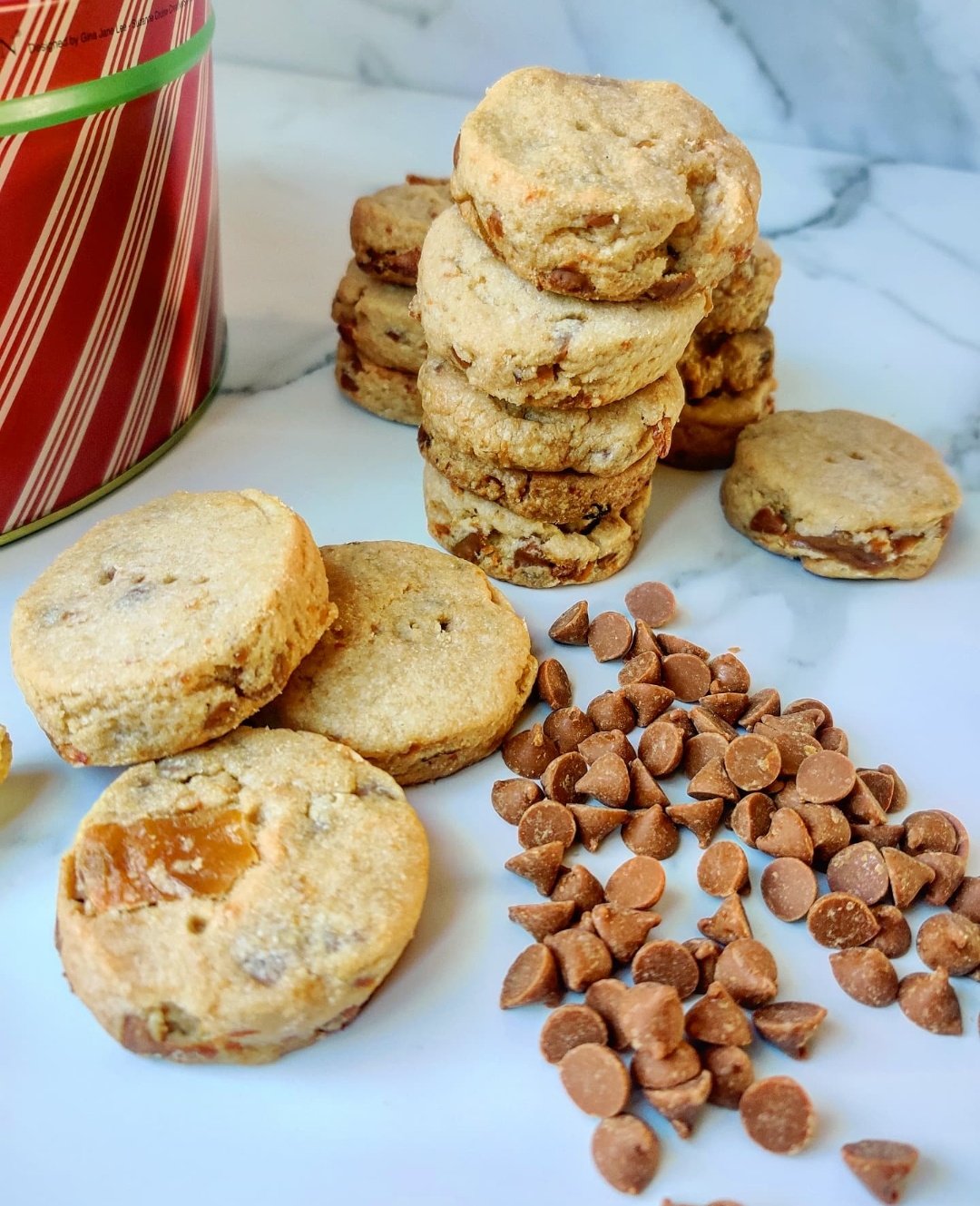
Cinnamon and Pear Shortbread Biscuits
Ingredients
- 3 cups white whole wheat or all-purpose flour + extra for dusting
- 1/2 cup + 2 tablespoons granulated sugar
- 1/2 teaspoon salt
- 2/3 cups dried pears
- 2/3 cups cinnamon chips or toffee bits
- 1 cup butter
- 1 teaspoon vanilla extract
- 2-3 tablespoons water
- Optional: 2-3 tablespoons heavy cream
Instructions
- In a stand mixer bowl on medium speed with a paddle attachment, beat the softened butter and sugar until incorporated, fluffy and light.
- Gradually add in the flour and salt at low speed until a dough begins to form. Initially, it will appear dry and won't create a dough that sticks together.
- Add the finely diced pears (you can also pulse in a food processor) and cinnamon chips and mix until evenly distributed and mix in with a spatula.
- Add the vanilla, and activate the gluten formation by adding the water and check a small amount with your fingers before bringing the dough together with your hands. Add more water and/or cream as needed to get the dough to stick together but don't put too much liquid! Only enough to work it into a slab.
- Transfer the dough to a lightly floured surface and use a rolling pin with cling film on top to flatten the dough about a 1/2 inch. Use a cookie cutter or knife to shape the individual cookies.
- Lay them out on parchment-lined baking trays and pierce with a fork (to ensure the heat gets in the middle during bake time) before chilling for at least 30 minutes.
- Bake at 350F for 30 minutes, then remove from oven and cool. Enjoy!
Notes
If you use white whole wheat flour, you will likely need to add 2-3 tablespoons of heavy cream when activating the gluten since there is less of it. You can also use all-purpose flour when dusting the surface to shape the dough.
Nutrition Facts
Calories
92Fat (grams)
5.2 gCarbs (grams)
10.3 gSugar (grams)
4.9 gProtein (grams)
1.4 gI am not a certified nutritionist and any nutritional information on dontmissmyplate.com should only be used as a general guideline.
Chocolate Coconut Cookies (Homemade Romany Cream Biscuits)
Introduction to Romany Creams: A Timeless Treat
If there's one biscuit that holds a special place in the hearts of Southern Africans, it's the iconic Romany Cream. Known for their rich chocolate flavor, perfectly crispy texture, and creamy center, these decadent treats have been a staple in households for generations. Whether paired with a hot cup of coffee, as a mid-afternoon snack, or shared during celebrations, Romany Creams are as versatile as they are delicious.
This recipe was inspired by Romany Creams (one of my favourite biscuits/cookies of all time). Make this batch first if you've never tried them, then taste the originals and let me know what you think!
My understanding is that Romany Creams were originally developed from Gipsy Creams (a reference to a recipe of custard cream biscuits from the nomadic people of Romany/other parts of Europe). Introduced in the UK, sales fell flat, but the recipe was revitalised in South Africa, where the biscuits are still produced today. I won't go too deep into the history here, but look it up when you get the chance.
I recommend making Romany Creams throughout the year, but with a few sprinkles, everyone will want you over in the holiday season.
A note on preparing the dough: using a stand mixer will save you some time, and the dough hook makes the kneading easier, giving you a more consistent result. However, you can use your hands throughout the process.
Here are some helpful tips for making perfect Romany Creams at home:
1. Choose Quality Ingredients
Use high-quality cocoa powder and chocolate for the best flavor. The richness of the biscuit depends on the quality of these key ingredients.
2. Cream Butter and Sugar Thoroughly
Creaming the butter and sugar until light and fluffy ensures the biscuits have the perfect texture—crisp yet tender.
3. Sift Your Dry Ingredients
Sifting the dry ingredients (like flour, cocoa powder, and baking powder) helps avoid lumps and ensures an even distribution for a smooth dough.
4. Don’t Overwork the Dough
Mix the ingredients until just combined. Overworking the dough can make the biscuits tough instead of light and crisp.
5. Shape Consistently
Roll the dough into evenly sized balls or logs to ensure the biscuits bake uniformly. If you’re pressing them with a fork, try to make the grooves consistent for an even texture.
6. Chill Before Baking
Letting the shaped dough rest in the fridge for 15–20 minutes before baking helps the biscuits hold their shape better in the oven.
7. Bake with Care
Keep an eye on the baking time. The biscuits should be firm but not overly browned to retain their chocolaty flavor.
8. Choose the Right Filling
Traditional Romany Creams are filled with chocolate ganache or melted chocolate. Ensure the filling has cooled slightly before sandwiching the biscuits to avoid making them soggy.
9. Allow Cooling Before Filling
Always let the biscuits cool completely before adding the filling to prevent the chocolate from melting unevenly.
10. Store Properly
Once assembled, store your Romany Creams in an airtight container to keep them fresh and crispy. They can last up to a week (if you can resist eating them sooner!).
With these tips in mind, you'll be well on your way to creating Romany Creams that rival store-bought versions—if not better! I try to abide by some of these tips for the most part.

Holiday Homemade Romany Creams
Ingredients
- 1/2 cup coconut sugar
- 1/2 cup granulated sugar
- 3 sticks butter
- 1 teaspoons vanilla extract
- 1 egg
- 3 tablespoons coconut oil, melted and cooled
- 2 1/2 cups all-purpose flour (optional: substitute 1/2 cup with coarsely ground rolled oats)
- 3/4 cup Dutch process or unsweetened natural cocoa powder
- 1 teaspoon baking powder
- 1 teaspoon salt
- 1 1/2 cups desiccated coconut
- 200g chocolate (milk and dark Cadbury or semi-sweet baking)
- Holiday sprinkles (optional)
Instructions
- Beat the sugars and butter until a creamy texture develops in a stand mixer. Add in the egg, oil and vanilla, and combine until smooth.
- Mix the other dry ingredients in a separate bowl, then add to the stand mixer bowl. Change the attachment to a kneading hook and mix quickly until a soft dough forms.
- Transfer the dough to a large floured piece of cling film. Cover with another piece, then roll out the dough to about an inch in thickness.
- Use a cookie cutter of the desired size and transfer the dough pieces to parchment-lined baking sheets - you'll probably have to do it in batches. If you are short on time, you can cover the dough with cling wrap and bake the next day.
- Optional: Use a fork to make cross lines and create a texture on the top biscuit. You can also add seasonal sprinkles on the top side of each cookie before baking.
- Chill the biscuits in the fridge covered for at least 10 minutes and bake for 10-11 minutes at 350F, watch for burning. Set aside to cool.
- While the first few batches bake, boil some water on medium-low and place a heat-resistant bowl on top. Add the chocolate to the bowl and heat until melted, stirring until smooth.
- Once everything has cooled, place a dollop of the melted chocolate inside one side of each biscuit, then close. And allow cooling further on a rack. Place in an airtight container and enjoy over five days for optimum taste.
Notes
You can also freeze the dough or cookie cut outs to bake in the future.
Nutrition Facts
Calories
118Fat (grams)
8.7 gCarbs (grams)
10 gSugar (grams)
4.3 gProtein (grams)
1 gI am not a certified nutritionist and any nutritional information on dontmissmyplate.com should only be used as a general guideline.


